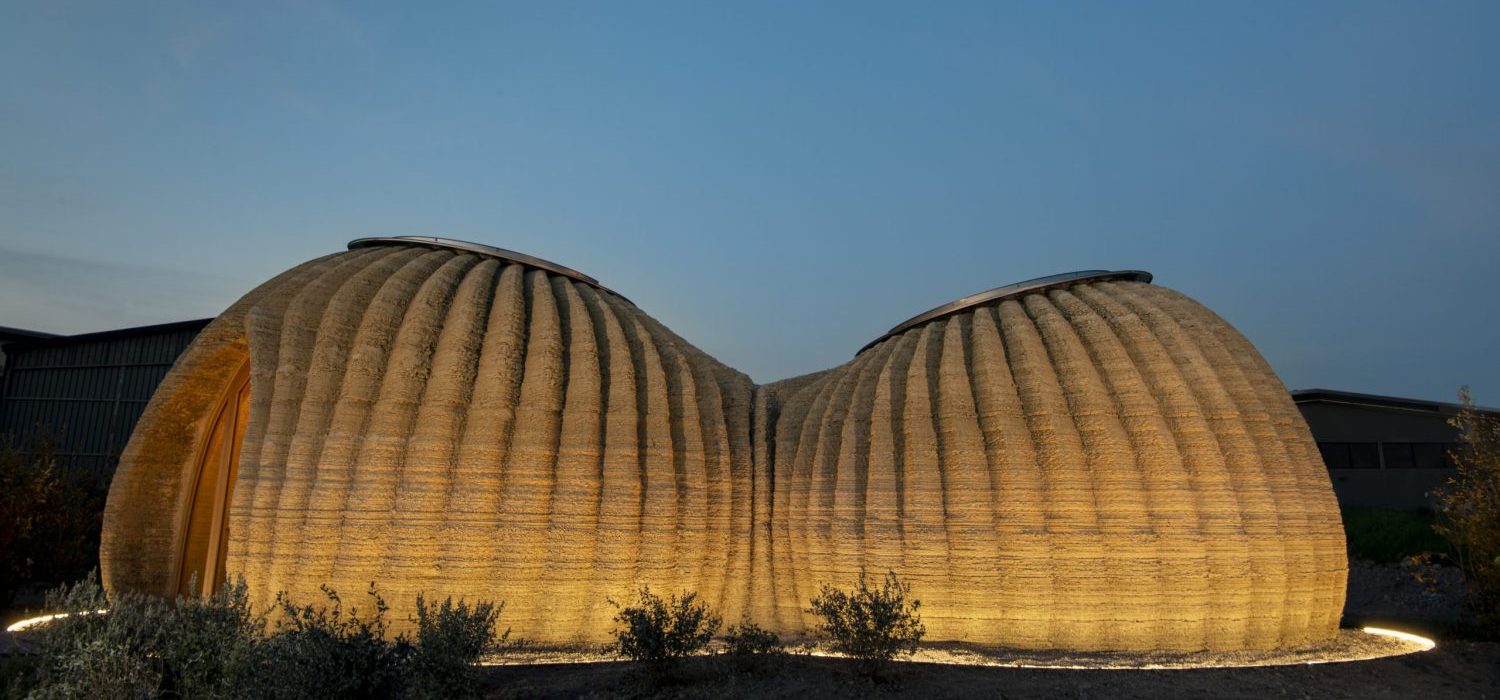3D Printing
General description
Fabricating parts with 3D printing technologies has the potential to reduce or avoid waste during the construction process while other advantages such as reduced construction time, low costs, and replicability can be achieved. For example, printing a small building with an earth mix can result in load-bearing walls made for disassembly that are printed in under 200 hours.
Examples
TECLA
Massa Lombarda, Italy
The soil used for construction was obtained from the site, analysed, and mixed with additives. Using a 3D printing technique, a total of 350 layers consisting of sinusoidal and continuous lines were printed within a time span of 200 hours. After a drying period of approximately 3 months, the structure was fully formed. The load-bearing earth walls eliminate the need for additional framing construction. To ensure effective insulation, the wall cavities were filled with rice husk obtained from agricultural waste.
The foundation is composed of three consecutive layers of rammed earth, rice husks, and gravel. The furniture is integrated into the structure and also printed, with only a few non-printable parts sourced from Italy. In order to improve the printability and structural qualities of raw earth, other materials were mixed in. Since soil composition varies, the mix was enhanced with silica sand, which accounts for 19% of the mixture. Additionally, shredded rice husks were added to increase longevity and help bind the earth mixture on a microscopic level.
However, a significant tradeoff was made, as approximately 10% of the earth mixture by weight consists of binders (4.69% lime and 4.7% hydraulic lime). Binders cannot be considered circular or sustainable, as their production involves the downcycling of stone while emitting high amounts of CO2. Binders only exhibit their binding effect once, during their chemical reaction. In reuse, they lose their binding function and behave like any other grain. Consequently, a new binder is required for each recycling process. Furthermore, binders are produced by quarrying rock or marl, which is pulverised and then burned. Often, high-quality rocks such as limestone are reduced to powder that can only be used once, resulting in relatively low-quality materials with limited durability and strength.